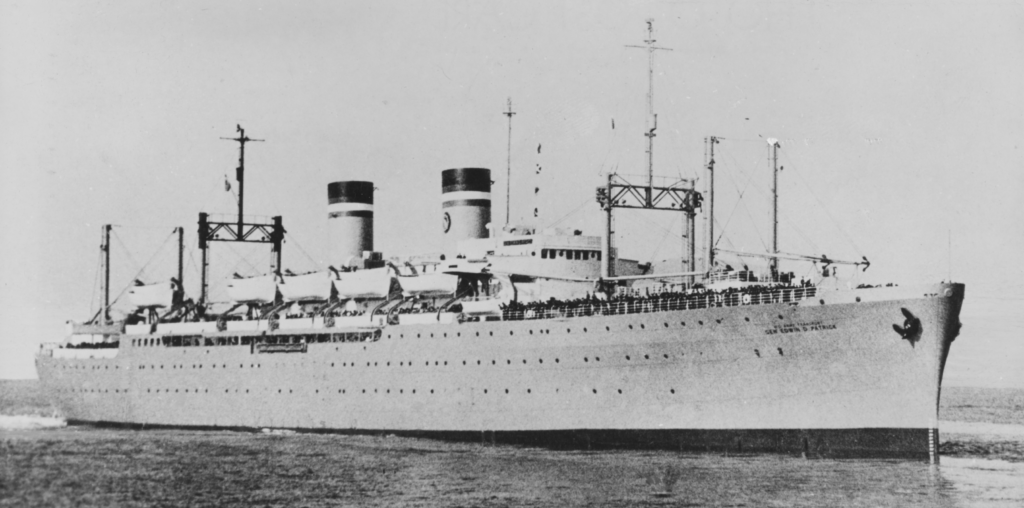
The General Edwin D. Patrick was the sole remaining ship afloat in the Admiral class of World War II troop transports. The ship is notable for its longevity as a troopship participating in World War II as the Admiral C.F. Hughes and the Korean and Vietnam wars under the name of General Patrick.[1]
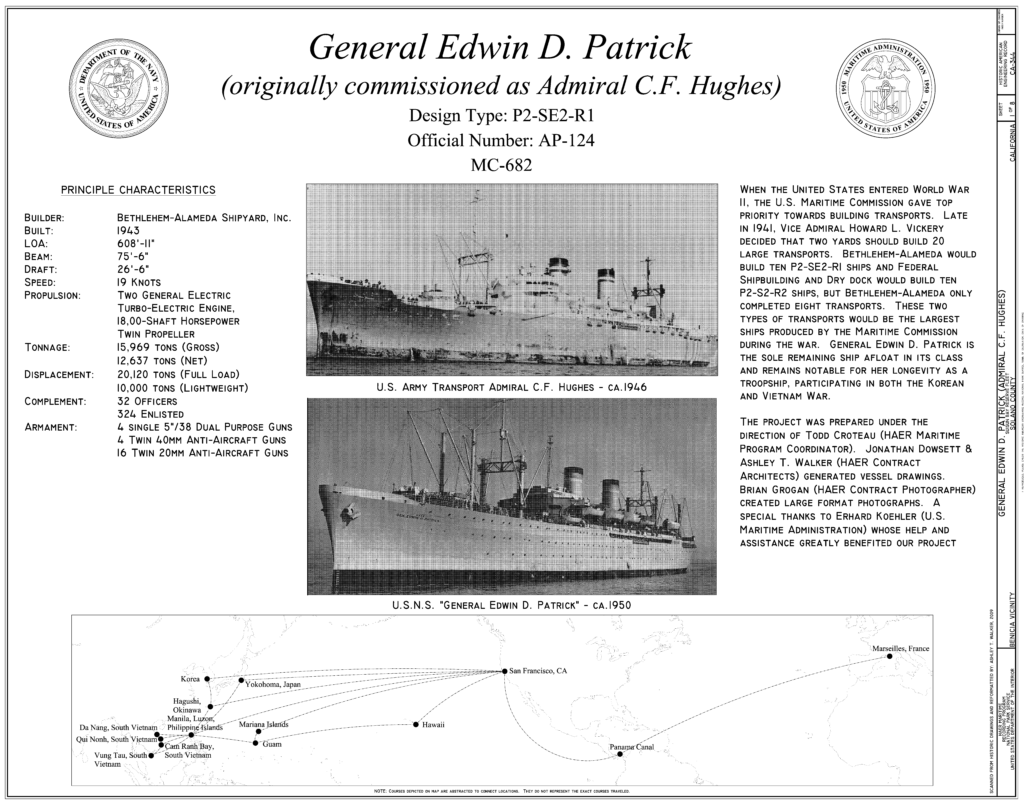
The ship’s keel was laid in November 1943 and she was launched in August of 1944. She was transferred to the Navy in January 1945 Operating as the Admiral Hughes, the ship began transporting troops from San Diego to the Pacific islands throughout March and April of 1945. On a trip to Guam, she picked up 221 Japanese prisoners and American troops bound for Pearl Harbor. She was sent to Western Europe via the Panama Canal to board American troops for the planned invasion force of the Japanese home islands. While in transit from New Guinea, the war ended. She arrived in San Francisco on 17 August 1945.
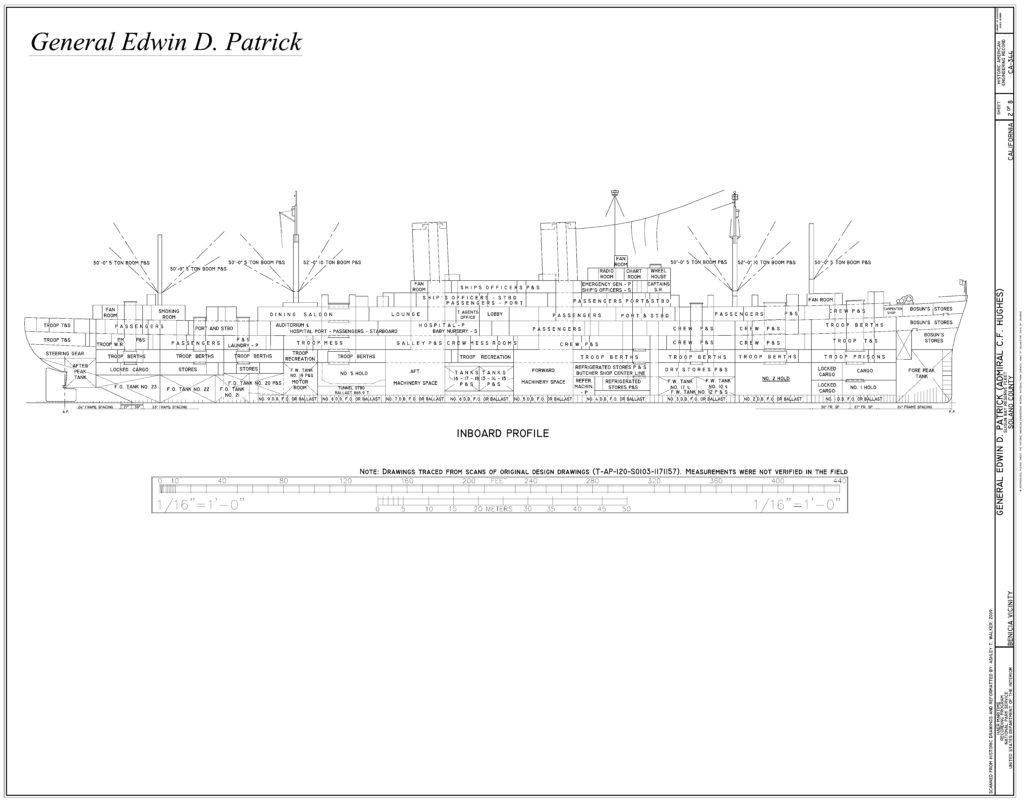
The Navy struck her from the register, and she was acquired by the U.S. Army and renamed the General Edwin D. Patrick. The Army used the ship until March of 1950 when the Navy reacquired the ship for the new Military Sea Transportation Service, but keeping the name General Patrick. When the Korean War broke out, the General Patrick, manned by a civilian crew, she carried troops and supplies to American bases in Japan, Korea, Okinawa, the Marianas and the Phillipines. She earned three battle stars for her Korean War service. After the Korean War, she continued transport operations, steaming to the Far East 110 times from 1953 to 1965. The General Patrick saw use in the Vietnam war in 1965-66, completing five deployments in the first seven months of 1966. At the end of 1966 she was taken out of active service, overhauled, and placed in ready reserve status. [3] She was scrapped in 2010 – 2011. [4]
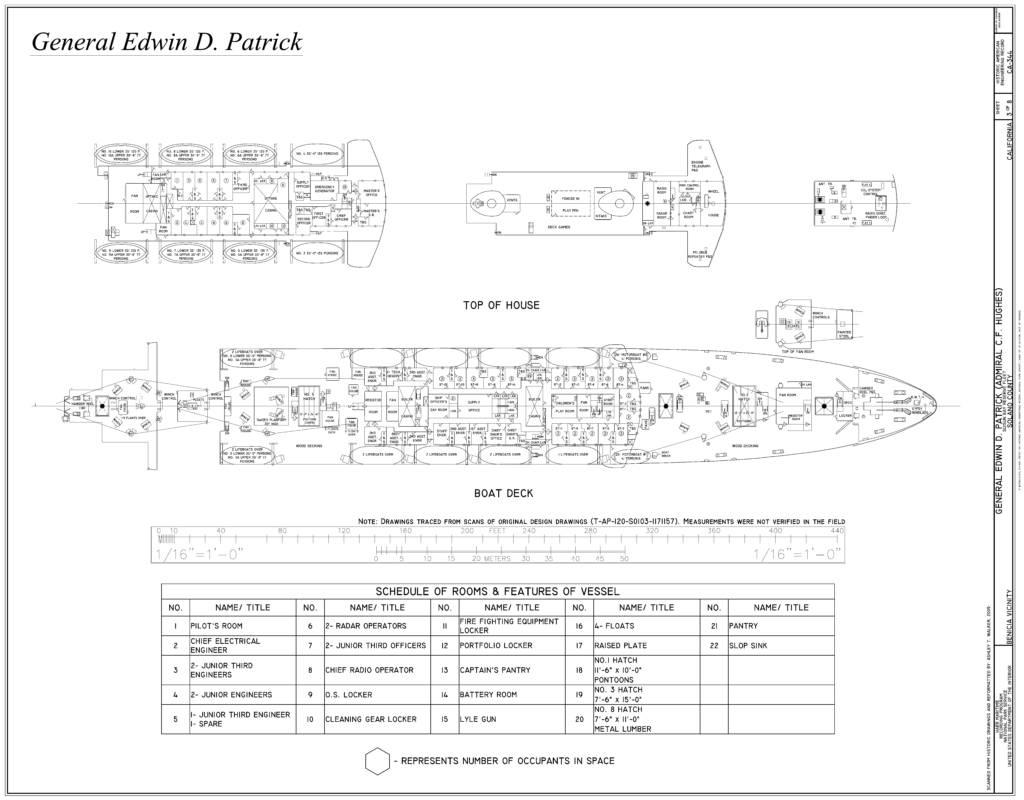
At the onset of World War II, the U.S. worked to built the ships it would need for the war. The Maritime Commission, which succeeded the World War I era Shipping Board, launched a its Emergency Program to build a massive number of standardized ships that would overcome the effects of Germany’s “wolf pack” of U-boats whose hunting grounds were the world’s seas.
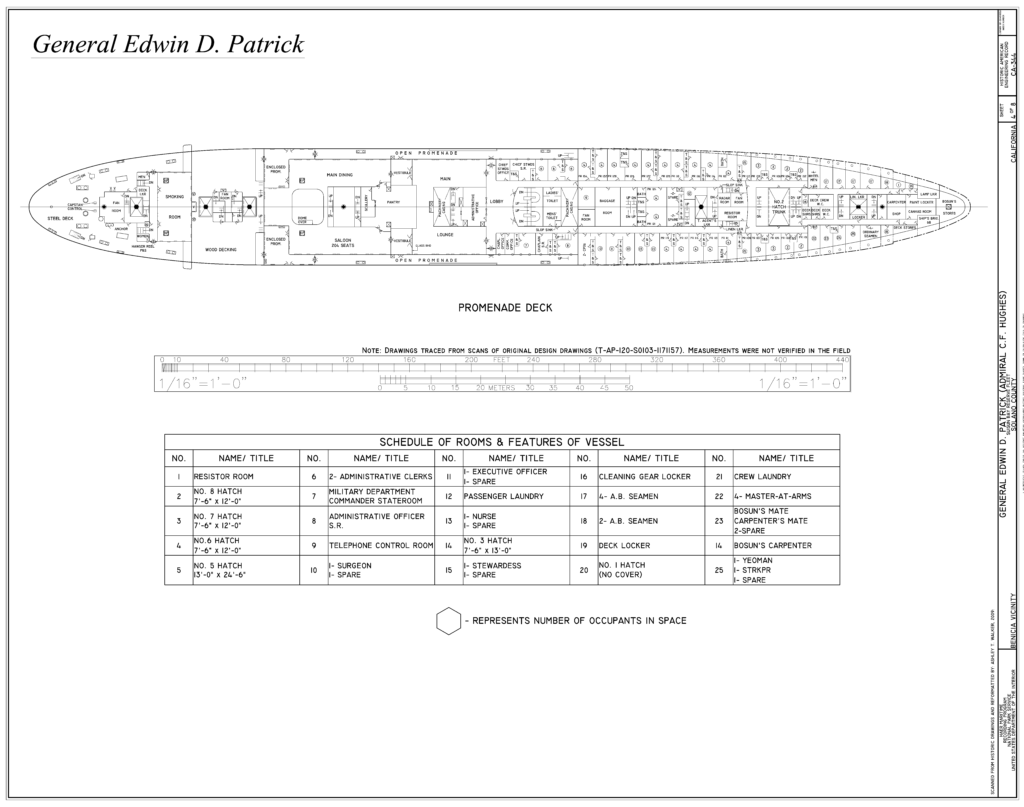
Among many other craft, the Maritime Commission developed two troop transport ships: the Admiral Class (P2-SE2-R1) and the General Class (P2-S2-R2), and awarded contracts for construction in January 1942. The ships designed so they could be converted after the war to combination passenger/cargo liners. Alameda-Bethlehem Shipyard in California was awarded the contract to build the Admiral class for American President Lines to operate in the Far East. Federal Shipbuilding in New Jersey was awarded the contract to build the General class for Grace Line or Moore-McCormack for use in South America.
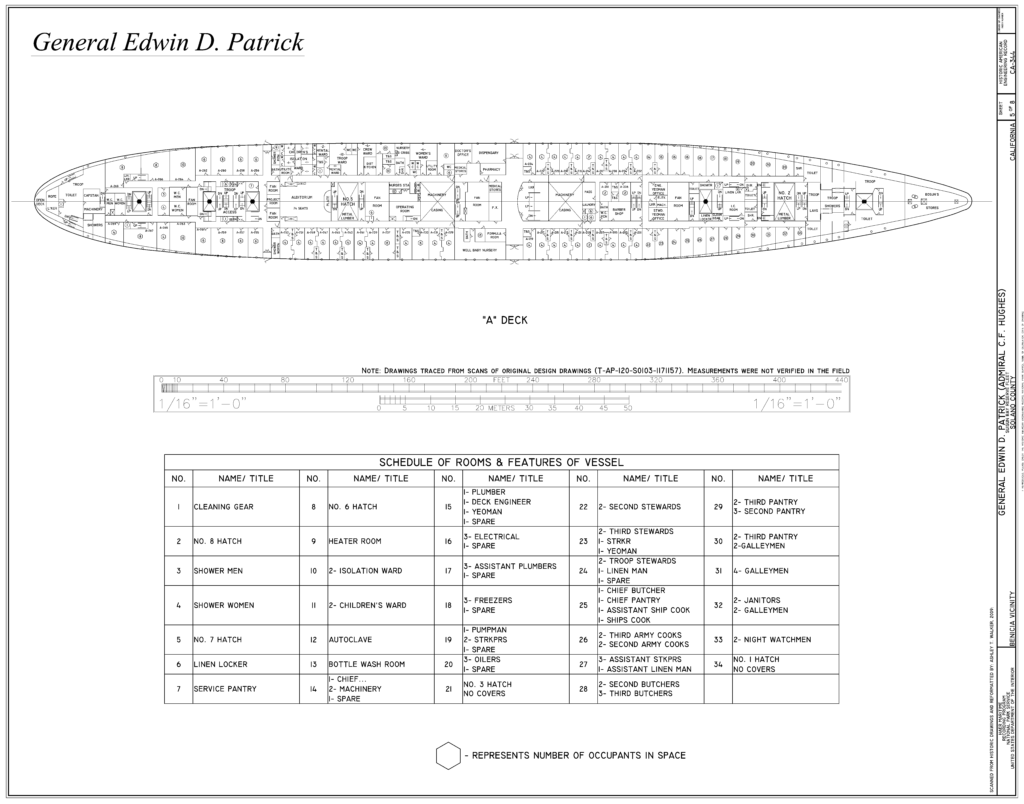
The design of the P2 ships was based around two features: the ships must be able to make a speed of 19 knots and have a light displacement of about 10,000 tons. The Admiral class measured 608′-11” overall with a beam of 75′-6” amidships, and a limiting draft of 26′–6”. The General class were longer with a 622′-7” overall length, but shared the 75′-6” beam, and had a draft of a foot less. The Admiral class could carry up to 5,000 troops and up to 48,000 cubic feet of cargo; the General class up to 5,500 troops and 100,000 cubic feet of cargo. The Admiral class had a cruising range of 12,000 nautical miles; the General, 15,000. These design parameters were based on proposed routes with which they would be tasked after the war.
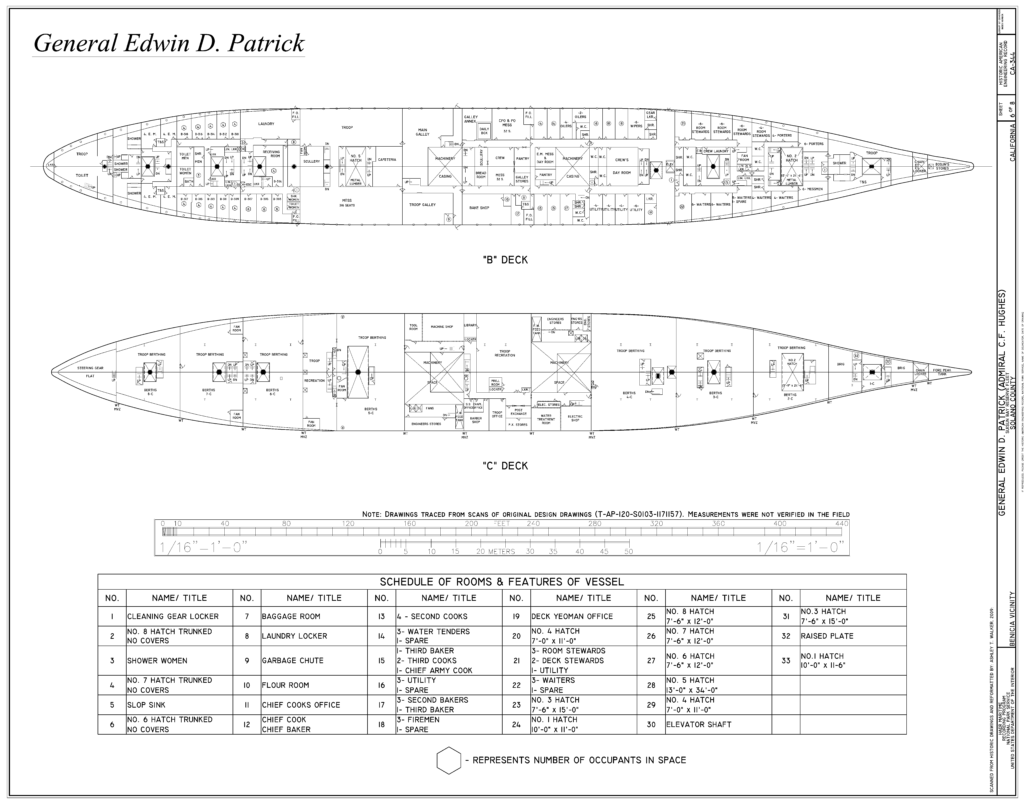
To reach the required speed, the ships needed two power plants rated at 18,000 shaft horsepower to drive two shafts. The Admiral class was outfitted with turbo-electric power sources and the General class geared turbines (which produced 17,000 shp). There were four boilers – two per shaft – made by Combustion Engineering. The forced-draft boilers, burning oil, generated steam at 840 degrees Fahrenheit at a pressure of 600 pounds per square inch (psi). The steam powered two General Electric turbine generators that powered two General Electric electric drives rated at 9,000 horsepower each that powered the propeller shafts.
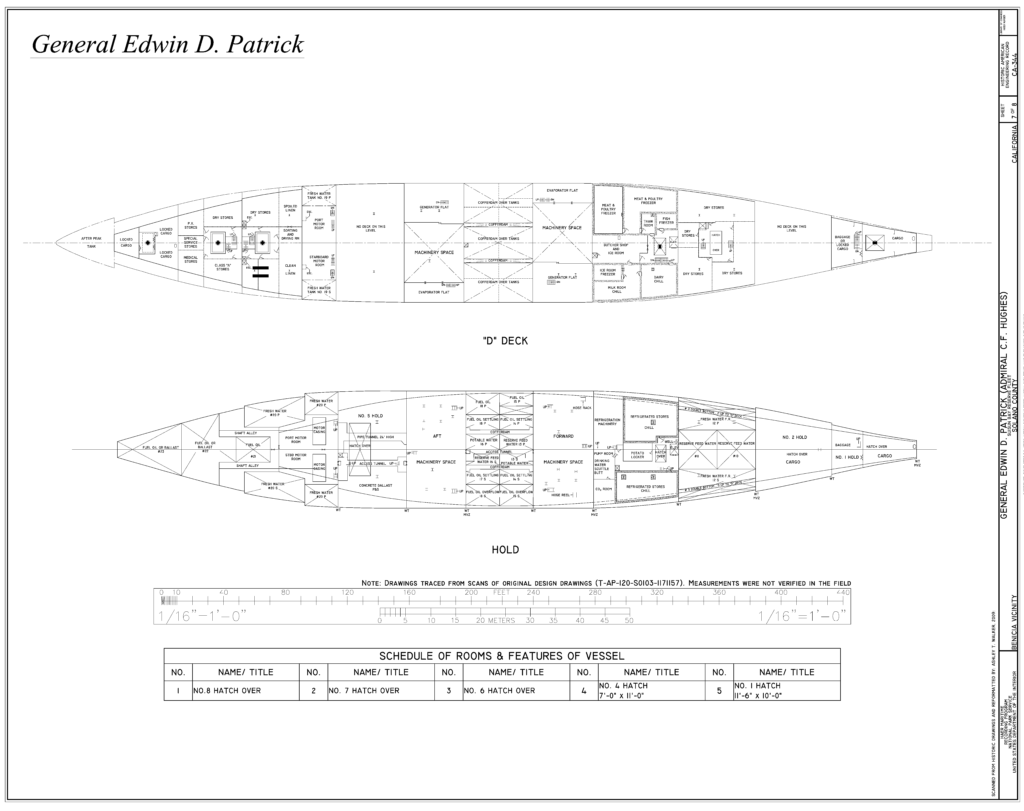
The ship’s crew of 32 officers and 324 enlisted men were berthed on the boat deck and below on the promenade deck. Officers of the troops were berthed in cabins on the promenade deck, while the troops were on the A and B decks ahead of the No. 2 hold, C deck and upper portions of the No. 1 hold. Enlisted men slept in “pipe racks” that were canvas-covered bunks stacked three or four high, attached to pipes that ran from the deck to the ceiling. Tweny-nine miles of ductwork circulated 34 million cubic feet of air an hour to 106 vents to provide air conditioning to the troops.
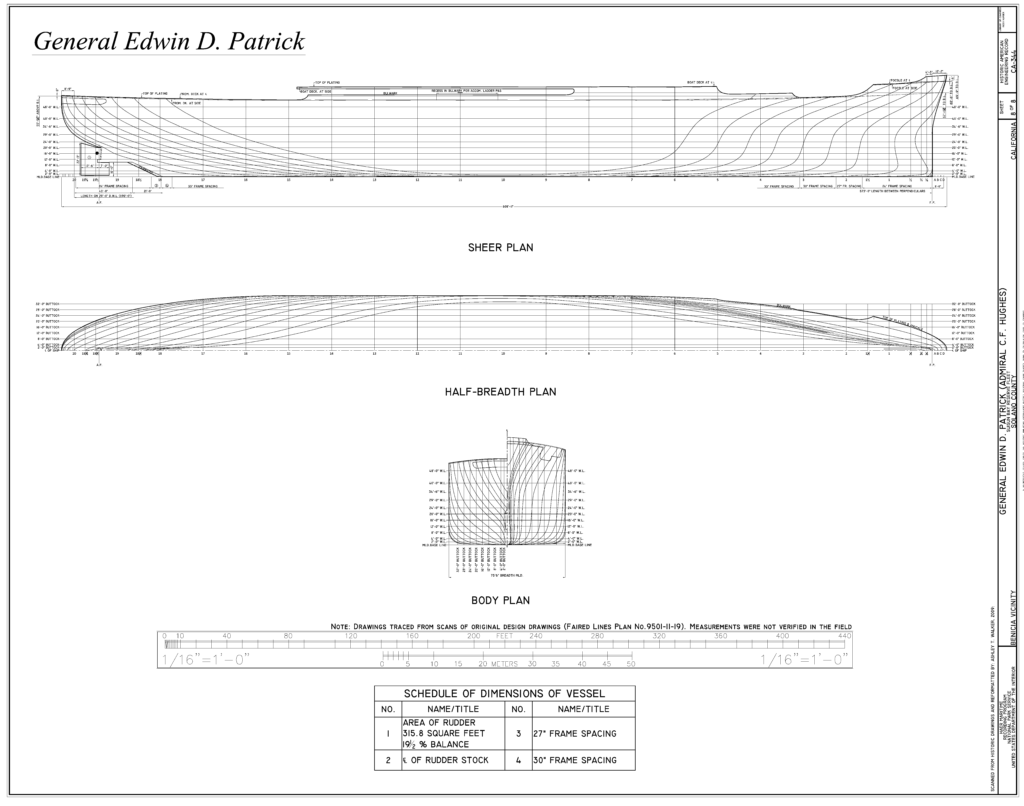
This project is part of the Historic American Engineering Record (HAER), a long-range program to document historically significant engineering and industrial works in the United States. The Heritage Documentation Programs of the National Park Service, U.S. Department of the Interior, administers the HAER program.
The documentation was prepared under the direction of Todd Croteau, HAER Maritime Program Coordinator. Ashley T. Walker, HAER, scanned and reformatted the vessel drawings. Erhard Koehler of the U.S. Maritime Administration assisted this project.
[1] All information, unless otherwise footnoted: Historic American Engineering Record CA-344 Written Historical and Descrptive Data author historian Brian Clayton https://tile.loc.gov/storage-services/master/pnp/habshaer/ca/ca3400/ca3461/data/ca3461data.pdf Accessed 12/07/2021
[2] https://www.history.navy.mil/content/history/nhhc/our-collections/photography/numerical-list-of-images/nhhc-series/nh-series/NH-105000/NH-105089.html accessed 12/07/2021
[3] https://www.history.navy.mil/research/histories/ship-histories/danfs/g/general-edwin-d-patrick.html accessed 12/07/2021
[4] https://vesselhistory.marad.dot.gov/ShipHistory/Detail/1812 accessed 12/07/2021